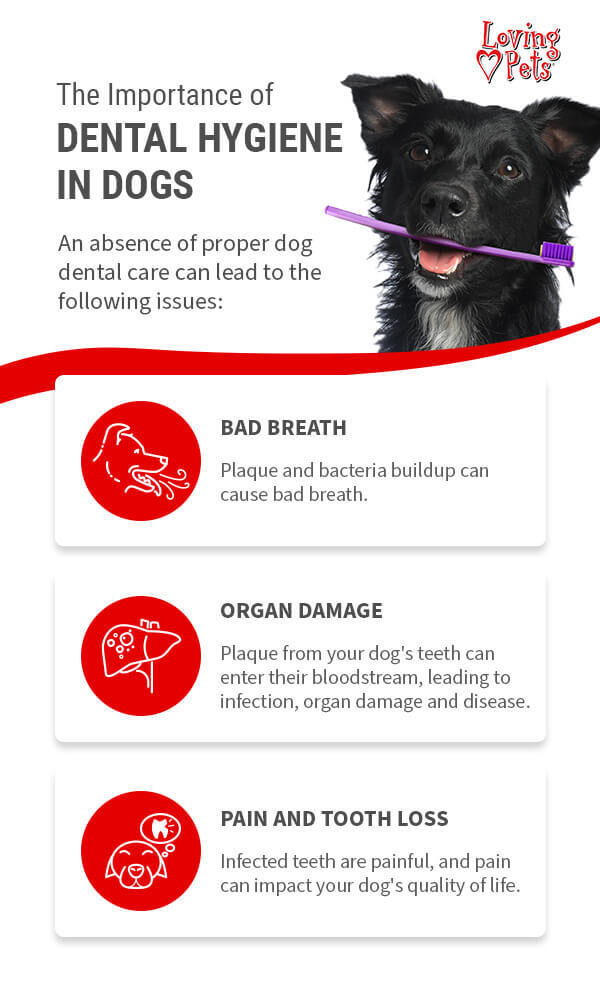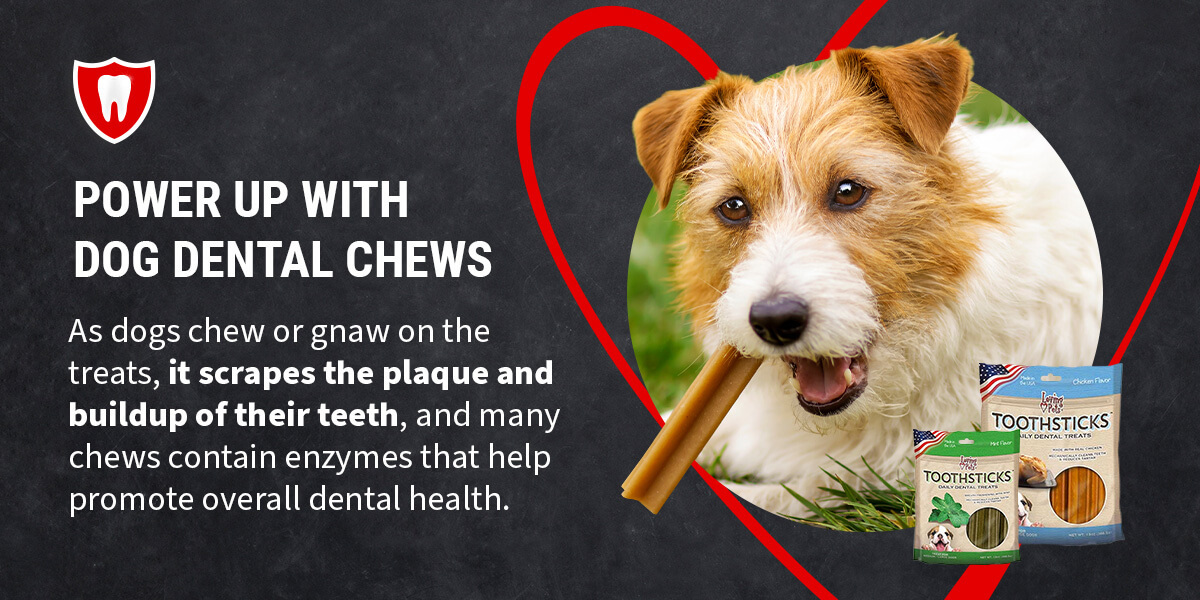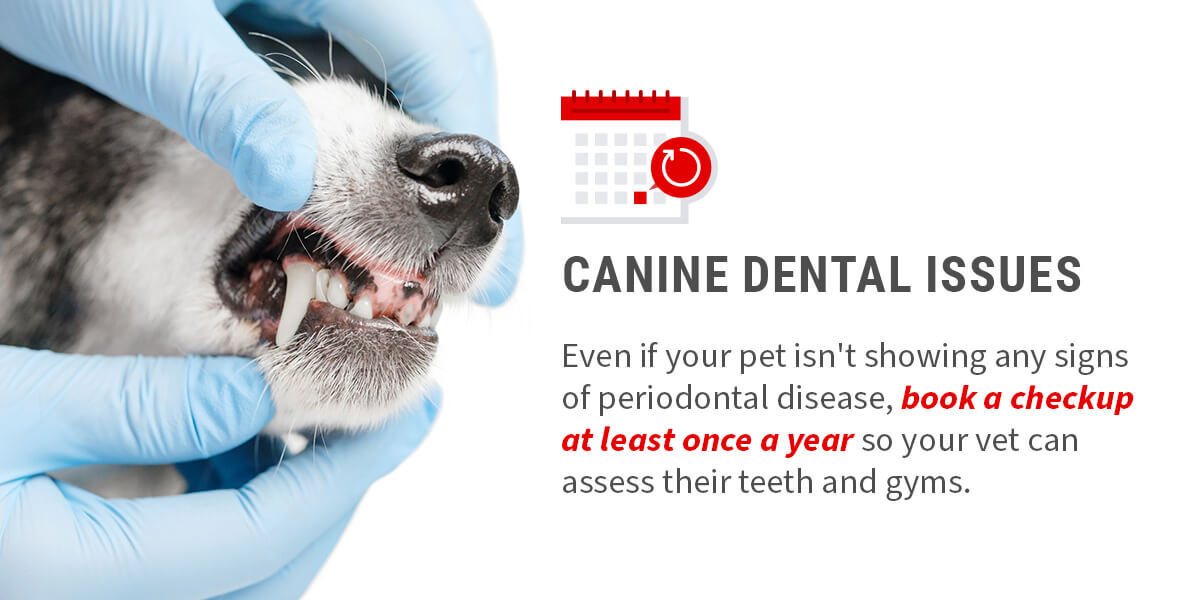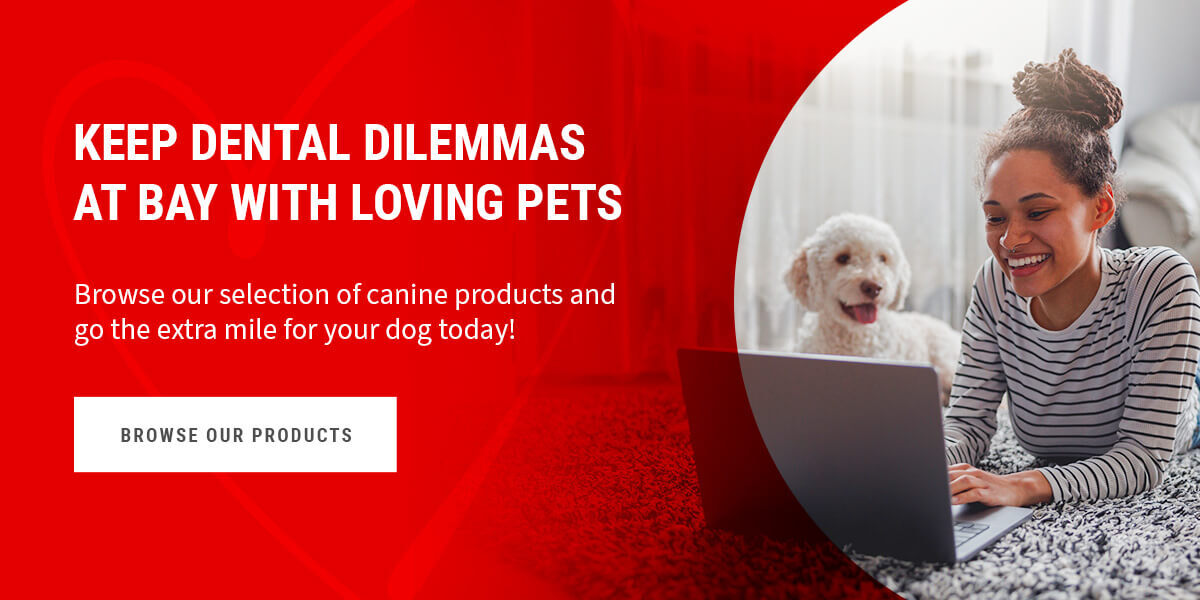Tips for Keeping Your Dog's Teeth Healthy and Clean
Like most dog owners, you want the best for your beloved friend and are willing to do whatever it takes to keep them happy and healthy. While often overlooked, periodontal disease is the most common disease in dogs over three years of age. Cleaning your dog's teeth is one of the most impactful things you can do for them. It's essential for their overall well-being and comfort.
You may have never cleaned your dog's teeth, or you're a new pet owner unsure where to start. In this article, we'll provide practical tips for maintaining your dog's dental hygiene. That way, you can focus on playing with them, getting some exercise and helping them live their best life.
The Importance of Dental Hygiene in Dogs
Bad breath isn't pleasant, but it's the least of our worries regarding dog dental health. Periodontal disease can cause some severe health issues for our four-legged friends, including tooth loss, painful abscesses and widespread infection. In addition, it puts dogs at risk of heart disease and permanent jaw damage. It can also be very uncomfortable for your dog, just as it would be for any human.

An absence of proper dog dental care can lead to the following issues:
- Bad breath: Plaque and bacteria buildup can cause bad breath. Many dog owners think it's normal for their pets to have bad breath, but it can be a sign of something more serious.
- Organ damage: Plaque from your dog's teeth can enter their bloodstream, leading to infection, organ damage and disease.
- Pain and tooth loss: Infected teeth are painful, and pain can impact your dog's quality of life. It can even prevent them from enjoying their food. In the long term, your dog might lose their teeth, affecting their quality of life.
At-Home Dental Care: Your Complete Routine
Although periodontal disease in dogs is a serious concern, you can take many steps to keep it at bay. Integrating daily habits into your routine, like brushing your dog's teeth and giving them dental chews, is essential to keeping your pet happy and healthy. Take the following steps for a complete home dental care routine:
1. Brush Your Dog's Teeth
Like in humans, canine dental cleaning is an excellent way of plaque removal. The more often you brush your dog's teeth, the better. Many dogs are initially uncertain about the process but get used to it with practice. You can even train them to stand still and brush their teeth the way they would for the groomer.
Human toothpaste contains ingredients that could be toxic to your dog, so make sure you get a special toothpaste that encourages tartar control for dogs. Depending on your vet's recommendations, you can buy a dog toothbrush or even a special brush that fits your index finger. The following steps can make brushing your dog's teeth easier:
- Test the toothpaste: Put a small amount of canine toothpaste on your finger and let your dog sniff and lick it. If they're interested, you'll find the process much easier. You may have to experiment with different flavors until you find one they like.
- Make your dog comfortable: Brushing their teeth is much more challenging if your dog is anxious or afraid. Take it slow. Instead of standing over them or holding them down, sit in front of them to make the experience more comfortable. Let them get used to the brush before you put it in their mouth.
- Start small: Before you rush in and start brushing, rub the brush along your dog's teeth and gums with your chosen toothpaste. If they show signs of anxiety, take the pressure off. You may need to do this for a few days before brushing your dog's teeth properly.
- Brush your dog's teeth: Lift your dog's upper lip and angle the brush bristles toward their gumline. With the brush at a 45-degree angle against their teeth, brush in circular motions from the top to the bottom of their teeth.
- Build on your progress: Your dog will only initially tolerate this process for a few moments. Brush a few teeth at a time, and work up to a little more time each day.
- Reward your dog: Every time you finish brushing your dog's teeth, make sure you end on a positive note. Reward them with their favorite treat, tell them how brilliant they are or go outside and play. Your dog will associate the teeth brushing with the reward, making the process more enjoyable.
2. Power Up With Dog Dental Chews

What better way to take care of your dog's teeth than to give them a treat? Dental chews are specifically made for plaque removal for dogs. As dogs chew or gnaw on the treats, it scrapes the plaque and buildup of their teeth, and many chews contain enzymes that help promote overall dental health. They also contain ingredients that help freshen your dog's breath, which is great for the dog and the owner.
Dog dental treats are often a bit tougher or denser than typical dog treats. The additional chewing stimulates saliva production, which washes away food particles and keeps your dog's mouth clean. Chewing also relieves boredom and anxiety, making it an all-around good experience for your dog. Dental treats come in many shapes, sizes and flavors, so you'll surely find something your dog will love.
One of the many reasons dental treats are so successful is that almost every dog prefers them to teeth brushing. However, they're a valuable supplement to brushing and not a replacement. Make sure you pick the right size treat for your dog's mouth, so they don't present a choking hazard. Look at the product information on any treats before you buy them to ensure they use only the highest-quality ingredients.
3. Choose Dental-Friendly Foods
Dog dental health is affected by diet. For example, dry dog food scrapes away plaque as dogs eat, while wet food is more likely to stick to their teeth, building plaque faster. However, wet food is easy to chew, which can be an excellent option for older dogs or dogs with existing teeth issues. Some tips for constructing a diet that benefits your dog's dental health include:
- Consult your vet: Choosing an unsuitable food can do more harm than good. Always consult your vet before making any major dietary changes. Based on those variables, they'll consider your dog's nutritional needs, health concerns and age and recommend specific food, treats or chew toys.
- Avoid human food: When you see those big brown eyes staring at you, feeding your dog scraps from the table can be tempting. However, sugary treats and leftovers can cause plaque buildup and other health issues.
- Focus on a healthy diet: Provided your vet approves, you can supplement your dog's diet with fresh ingredients to keep their breath fresh and teeth healthy. Apples, blueberries, celery and carrots are all excellent additions, offering numerous health benefits in addition to fresh breath.
4. Use Water Additives as a Simple Way to Boost Dental Hygiene
Water additives are dental wash you can add to your dog's water. Studies show they can reduce the accumulation of dental deposits and improve gum health. If you're short on time or your dog isn't keen on daily brushing, water additives can be very helpful as part of an overall dental care routine. However, some dogs are suspicious of the taste, so they may not work in every pet home.
Check the ingredients on any water additive and clear it with your vet before use. While these additives are useful, they don't provide the deep cleaning of dental chews or brushing. They're best used to control bad breath and as a preventive treatment rather than a replacement for brushing or dental chews.
How to Spot Canine Dental Issues Early
Dog gum disease, or gingivitis, is common for many pet owners. It's among the earliest stages of plaque and bacteria buildup in your dog's mouth. It can lead to pain, bleeding or more serious issues if left untreated.
Even with the most comprehensive dental hygiene possible, it's best to watch for the signs so you can act early. Your dog may not be able to tell you there's an issue, but there are some signs to look out for, including:
- Bad breath
- Difficulty eating and weight loss
- Refusing hard food and only eating soft treats
- Staining or calcified areas on their teeth
- Pawing at the mouth
- Swollen or bleeding gyms
- Excessive salivation
- Dropping food when eating
- Missing or broken teeth
- Head shaking

If your dog has any of these symptoms, the best thing to do is contact your vet. They can examine your dog's mouth and recommend the best treatment based on the results. Even if your pet isn't showing any signs of periodontal disease, book a checkup at least once a year so your vet can assess their teeth and gyms. It makes sense to book a professional cleaning with your vet or a veterinary dentist at the same time.
The process begins with an oral exam. Your vet might also ask for X-rays to evaluate your dog's jaw and roots below the gumline. Your vet will perform a thorough cleaning and dental evaluation while your dog is under anesthesia. It includes scaling and polishing, similar to what you can expect when you visit the dentist.
Puppy Dental Care for a Lifetime of Happy Smiles
Clean, healthy teeth start in puppyhood — the perfect time to build a foundation for good dental habits. Getting your dog used to regular dental routines when they're a puppy will make dental care easier for you both in the long term. Brushing and other parts of your dental routine are fun for puppies and create positive associations so you can care for your adult dog without fear or confusion.
Like human children, puppies go through different stages of dental development. Between 3-6 weeks old, their baby teeth come through. These teeth are temporary, and their adult teeth will replace them. By 7 months of age, most breeds of dogs will have 42 full adult teeth. The more issues you can identify in puppyhood, the quicker and more effectively your vet can treat them.
Some tips and tricks for effective dental care in puppyhood include:
1. Create a Fun Introduction to Teeth Brushing
Brushing any dog's teeth takes practice, and puppies are often everywhere. However, starting when they're young saves you time and unpleasantness. Start by gently rubbing your puppy's gums to get them used to the feeling of your finger. From there, you can slowly introduce a fingerbrush or soft toothbrush specifically designed for puppies. Start brushing their teeth with water, and once they're used to that, you can add a vet-approved puppy toothpaste.
During the puppy phase, brushing your pet's teeth is more about training than dental hygiene, especially in the beginning. Positive reinforcement is essential for any training. Reward your puppy for positive behaviors during and after each session to create positive associations. Over time, they might even look forward to being pampered.
2. Get Safe Chew Toys
Chew toys are great for promoting saliva production, easing teething discomfort and allowing puppies to appease their natural chewing instinct. However, unsuitable chew toys can have the opposite effect. Select your puppy's chew toys carefully to prevent long-term damage. Look for chew toys designed for puppies and made with durable materials.
Ask your vet for their best puppy toy recommendations. Chews should be large enough that your puppy can't choke on them and soft enough that they don't break any teeth. Limit how long your puppy chews their toys, and always supervise them when they play. If toys show signs of breaking, throw them away and replace them with something new.
3. Maintain a Hygienic Eating Area
Puppy food and water bowls are prone to bacteria buildup. Clean your pup's bowls and eating area daily, and if they're a messy eater, catch messes and spills with dog food mats. Dispose of old food if your puppy doesn't finish their meal and make sure they always have access to fresh water. Swap out the water whenever it looks dirty and after eating to limit the spread of bacteria.
Keep Dental Dilemmas at Bay With Loving Pets
Caring for your pet's teeth is part of being a pet owner— it can make all the difference in your dog's life. From daily brushing to high-quality dental chews, every step you take makes your dog happier and more comfortable. At Loving Pets, we offer a range of dental chews to keep your pup's mouth as clean as possible. They taste good, and they're packed with quality ingredients to keep your dog looking and feeling their best.
Loving Pets has brought high-quality dog treats and accessories to devoted pet owners since 2005. We believe in wagging tails, joyful barks and big smiles, so we craft every product to the highest possible standards. Browse our selection of canine products and go the extra mile for your dog today!




